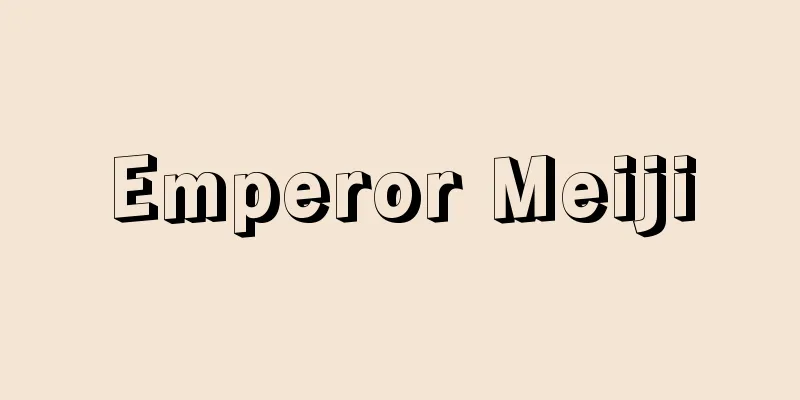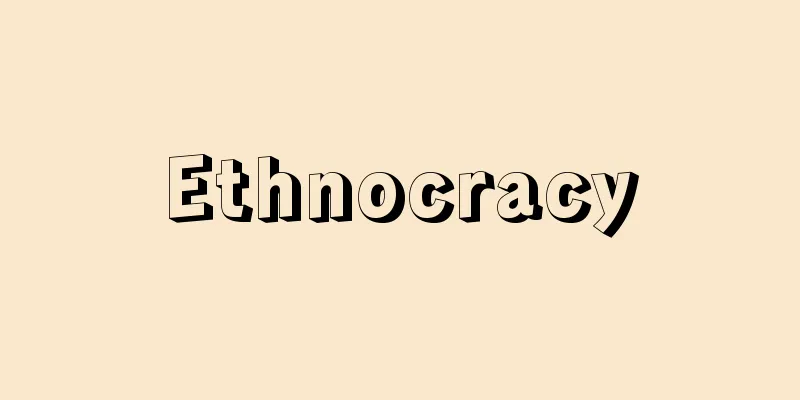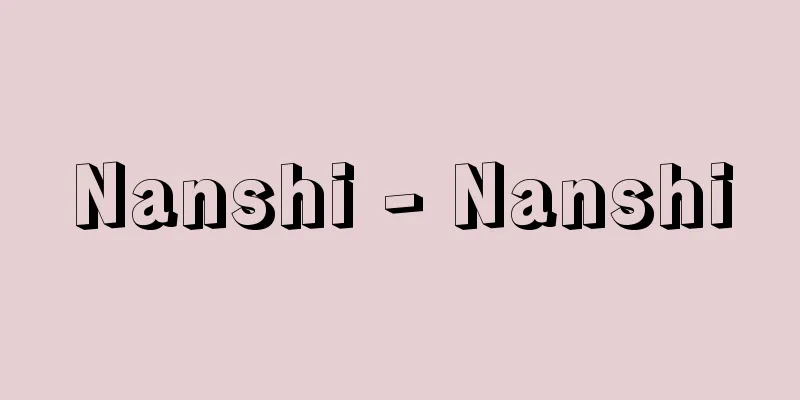Emperor Meiji

|
According to the Imperial lineage, he is the 122nd Emperor (reigned 1867-1912). He was the second son of Emperor Komei, and his mother was Yoshiko, the daughter of Gon Dainagon Nakayama Tadayasu. He was born on September 22, 1850, and named Sachinomiya. In 1860 (Man'en 1), he became Crown Prince and changed his name to Mutsuhito. Following the sudden death of Emperor Komei in December 1866 (Keio 2), he ascended to the throne the following January 1867. In this year, both the Shogunate and the anti-Shogunate faction intensified their manipulation of the Imperial Court, and the Imperial Court, with a young Emperor as its leader, was forced to make a complicated response by granting Imperial sanction in the name of the Emperor to the petition of Shogun Tokugawa Yoshinobu to return the government to the Emperor in October, while also issuing a secret imperial decree to overthrow the Shogunate to the feudal lords of Satsuma and Choshu. Furthermore, in December, under the leadership of the anti-Shogunate faction, a great decree was issued to restore the Imperial Rule, and a new government was established. During the Boshin War, which lasted from 1868 (Meiji 1) to the following year, the government ordered an eastern expedition and overthrew the forces of the former Shogunate. During this time, the Five Articles of Oath were issued to declare the basic policy of the new government, a new political system was adopted through a Constitutional Law, the era name was changed to Meiji, and the system of one emperor per era was established. In 1869, the capital was moved to Tokyo, and Imperial sanction was granted to the petition to return the domain and people to the Emperor. At first, court nobles and former feudal lords dominated the government, but gradually Sanjo Sanetomi, Iwakura Tomomi, Kido Takayoshi, Okubo Toshimichi and others gained more influence, and in 1871 they abolished the feudal domains and established prefectures, realizing a centralized system of power. At the same time, they issued the Imperial Proclamation of the Great Religion, promoting the establishment of Shinto as the state religion and the absolute authority of the Emperor. In order to develop the Emperor as an independent ruler, Iwakura and others carried out reforms in the Imperial Court, abolished old customs, switched to a system of direct rule by the Emperor, and worked to cultivate the Emperor's virtue. In 1873, when the government was in conflict over the debate over the Korean Expedition, the emperor issued an imperial sanction to halt the dispatch of Saigo Takamori to Korea, and in 1875 he issued an imperial edict to gradually establish a constitutional government, promoting political reform. In addition, in response to the rise of the Freedom and People's Rights Movement, he sought to calm the movement by clarifying the date for the opening of the National Diet in 1881, and in his Imperial Rescript to Soldiers and Sailors in 1882 he positioned the military as the Emperor's army, and as Supreme Marshal he led the military and worked to increase armaments. From 1884 onwards, he began to establish various systems to correspond to the constitutional system, including the creation of a cabinet system, and established a system of bureaucratic control down to the very edge of the local community by establishing systems for cities, towns, villages, prefectures, and counties, and secured enormous assets for the Imperial Household. In 1889, the Constitution of the Empire of Japan was promulgated, stipulating the Emperor's broad prerogatives and establishing the foundation of an imperial state. In the following year, 1890, the Imperial Rescript on Education was issued, setting out a model for national morality. After the opening of the Imperial Diet, the political parties based in the House of Representatives and the clan-based government came into sharp conflict, but the Emperor often played the role of mediator through imperial edicts, and tried to appease the policy differences and emotional antagonism between the statesmen. During the Sino-Japanese and Russo-Japanese wars, he was in charge of direct wartime leadership at the Imperial Headquarters, and he also concluded the Anglo-Japanese Alliance to strengthen Japan's military and economic substance in order to become one of the great powers. After the Russo-Japanese War, he proceeded with the annexation of Korea and the management of Manchuria, adopting an expansionist policy as a colonial empire, and completing the pending revision of treaties in 1911 (Meiji 44). However, his chronic diabetes worsened around this time, and he died of illness on July 30, 1912. The Emperor, who ascended to the throne at a young age, lived through the tumultuous period from the end of the Edo period to the Meiji era, working with the so-called Meiji Restoration heroes to build the Meiji state, and was revered by the people as an absolute monarch. He lived a simple life, was strict in self-discipline, and maintained his dignity as an emperor. For this reason, the death of Emperor Meiji was seen as the end of the Meiji state, and the imperial state that had been built around Emperor Meiji was also forced to change. [Uno Shunichi] "Emperor Meiji, volumes 1 and 2, by Watanabe Ikujiro (1958, Meiji Emperor Praise Society)" ▽ "Principles of Rule of the Imperial State, by Fujita Shozo (1966, Miraisha)" ▽ "New Collection of Ruisanshu: Emperor Meiji's Works" (1990, Meiji Shrine)" ▽ "Emperor Meiji and Portraits of Politicians - Promoters of the Formation of a Modern State, edited by Numata Satoshi (2002, Yoshikawa Kobunkan)" ▽ "Collection of Conversation Records of the 'Meiji Emperor Chronicle', all 9 volumes, edited by Horiguchi Osamu (2003, Yumani Shobo)" ▽ "Speaking of Emperor Meiji, by Donald Keene (Shincho Shinsho)" [References] |One Emperor, | Rule| |Imperial Rescript |Emperor Komei| | | |Restoration of Imperial Rule|Constitution |Abolition of the Emperor©Shogakukan Library "> Emperor Meiji ©Shogakukan "> Emperor Meiji's tours by year Source: Shogakukan Encyclopedia Nipponica About Encyclopedia Nipponica Information | Legend |
|
皇統譜上第122代とされる天皇(在位1867~1912)。孝明(こうめい)天皇の第2皇子で、母は権大納言(ごんだいなごん)中山忠能(ただやす)の女(むすめ)、慶子(よしこ)。嘉永(かえい)5年9月22日生まれ、祐宮(さちのみや)と命名された。1860年(万延1)皇太子となり、睦仁(むつひと)と改名。1866年(慶応2)12月孝明天皇の急逝により、翌1867年1月践祚(せんそ)。この年、幕府側と討幕派はそれぞれ朝廷への工作を強め、若年の天皇を擁する朝廷は、天皇の名において10月将軍徳川慶喜(よしのぶ)の大政奉還の上表に勅許を与える一方、薩長(さっちょう)両藩主に討幕の密勅を下すという複雑な対応を迫られた。さらに12月、討幕派の主導で王政復古の大号令を発し新政府を樹立、1868年(明治1)から翌年にかけての戊辰(ぼしん)戦争では東征を命じ旧幕府勢力を打倒した。この間、五か条の誓文を発布して新政府の基本方針を宣言し、政体書によって新しい政治制度を採用、明治と改元し一世一元の制を定めた。1869年には東京に遷都し、版籍奉還の上表を勅許した。政府内では初め公家(くげ)や旧大名が中心を占めていたが、しだいに三条実美(さねとみ)、岩倉具視(ともみ)、木戸孝允(たかよし)、大久保利通(としみち)らの発言権が大きくなり、1871年廃藩置県を断行し中央集権体制を実現した。他方、大教宣布(だいきょうせんぷ)の詔を出し、神道(しんとう)の国教化と天皇の絶対化の推進を図った。岩倉らは天皇を主体的な君主として育成するため、宮廷改革を行って旧習を廃止し、天皇親政体制への切り替えと君徳の培養に努力した。1873年征韓論をめぐる政府内の対立には勅許をもって西郷隆盛(さいごうたかもり)の朝鮮大使派遣を中止させ、1875年には漸次(ぜんじ)立憲政体を立てるとの詔書を出して政体改革を進めるなど、天皇は政府内部の対立を調停する役割を果たした。さらに自由民権運動の高まりに対しては、1881年国会開設の時期を明示して運動の鎮静化を図り、1882年の軍人勅諭では軍隊を天皇の軍隊と位置づけ、大元帥(げんすい)として軍隊の統率にあたり、軍備の増強に努めた。1884年以降は内閣制度創設をはじめ立憲制に対応する諸制度の整備に着手し、市制・町村制、府県制・郡制の制定による地域末端までの官僚支配体系の整備と、莫大(ばくだい)な皇室財産を確保した。 1889年、大日本帝国憲法を公布して広範な天皇大権を規定して天皇制国家の基礎を確立し、翌1890年には教育勅語を渙発(かんぱつ)して国民道徳の規範を示した。帝国議会開設後は、衆議院に依拠する政党勢力と藩閥政府が鋭く対立するが、天皇はしばしば詔勅によって調停者的機能を果たし、元勲(げんくん)間の政策上の対立や感情的反目を宥和(ゆうわ)することにも努めた。日清(にっしん)・日露戦争では大本営で直接戦争指導の衝にあたり、また、日英同盟を締結して列強の一員たるべく軍事的、経済的内実の充実を図った。日露戦後には韓国併合や満州経営を進め、植民帝国として膨張政策を採用するとともに、1911年(明治44)には懸案の条約改正を完成させたが、このころから持病の糖尿病が悪化し1912年7月30日に病没した。 若年にして即位した天皇は、幕末から明治時代の激動期を、いわゆる維新の元勲らとともに明治国家の建設に努め、絶対君主として国民に畏敬(いけい)された。日常生活は質素を旨とし、自己を律すること厳しく、天皇としての威厳を堅持した。そのため明治天皇の死は明治国家の終焉(しゅうえん)として意識され、明治天皇を中軸に構築された天皇制国家のあり方にも変容が迫られることになった。 [宇野俊一] 『渡辺幾治郎著『明治天皇』上下(1958・明治天皇頌徳会)』▽『藤田省三著『天皇制国家の支配原理』(1966・未来社)』▽『『類纂新輯明治天皇御集』(1990・明治神宮)』▽『沼田哲編『明治天皇と政治家群像――近代国家形成の推進者たち』(2002・吉川弘文館)』▽『堀口修編『「明治天皇紀」談話記録集成』全9巻(2003・ゆまに書房)』▽『ドナルド・キーン著『明治天皇を語る』(新潮新書)』 [参照項目] | | | | | | | | | | | |©小学館ライブラリー"> 明治天皇 ©Shogakukan"> 明治天皇巡幸年次別回数 出典 小学館 日本大百科全書(ニッポニカ)日本大百科全書(ニッポニカ)について 情報 | 凡例 |
<<: Meiji Art Association - Meiji Bijutsukai
>>: Art of the Meiji and Taisho Periods
Recommend
Czech (Republic) (English spelling)
…Official name = Czech Republic Česká Republika∥C...
Commentaria
…In the past, it was called the late Commentary S...
Miscellaneous notes from the Motherland - Sokkuzakki (English) Otechestvennïe zapiski
A 19th century Russian monthly magazine. It can al...
Phasianus soemmerringii subrufus (English spelling)
…[Ryozo Kakizawa]. … *Some of the terminology tha...
Mughal Empire
The largest Muslim dynasty in Indian history (152...
Power supply command
…Power supply operations are the nerve system of ...
Bardot
French actress. Born in Paris. While working as a ...
Issunboshi - Issunboshi
A folk tale. One of the unusual birth stories tha...
Camp (military base) - kyampu
...Depending on the way the missiles are deployed...
Gogo
...Located on a plateau at an altitude of 1100-12...
Kantoensis
...Distributed in Honshu. There are variations de...
récit (English spelling)
… What is a story? Narratives are generally consi...
Kaito Kayo - Kaito Kayo
A collection of Korean songs from the Yi Dynasty. ...
El'kan beienin (English spelling)
...Negidar is a self-proclaimed name meaning &quo...
Kimotsuki Mountains - Kimotsukisanchi
A mountain range stretching for about 56 km from ...









